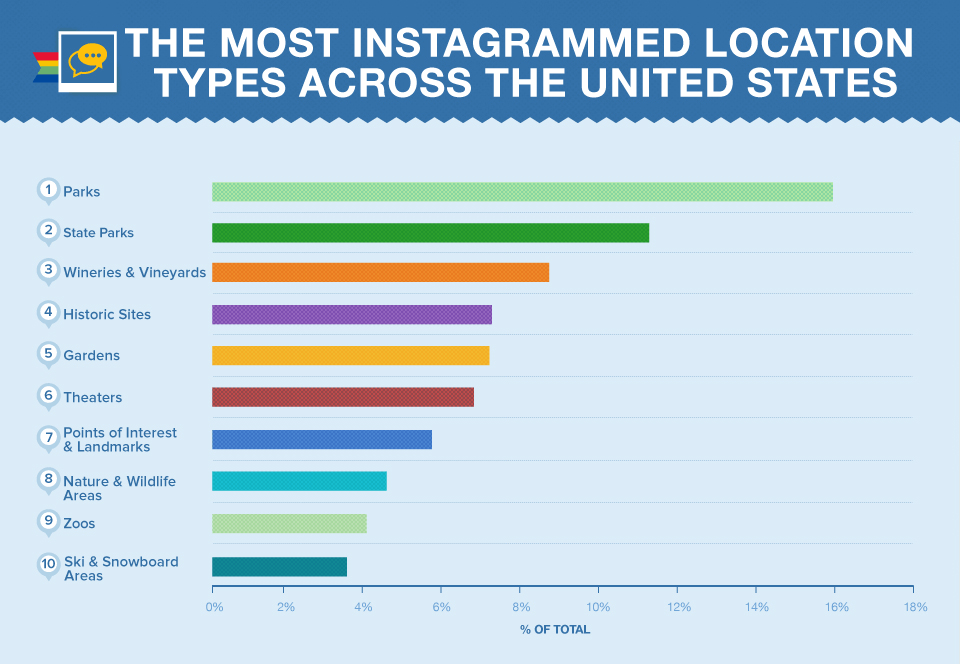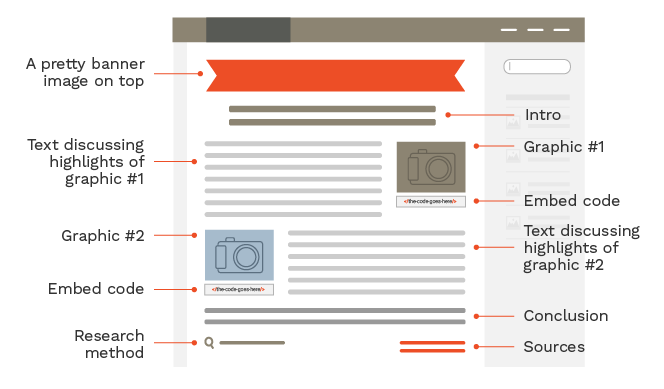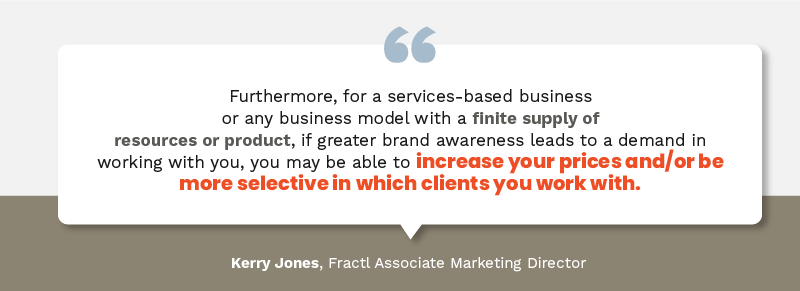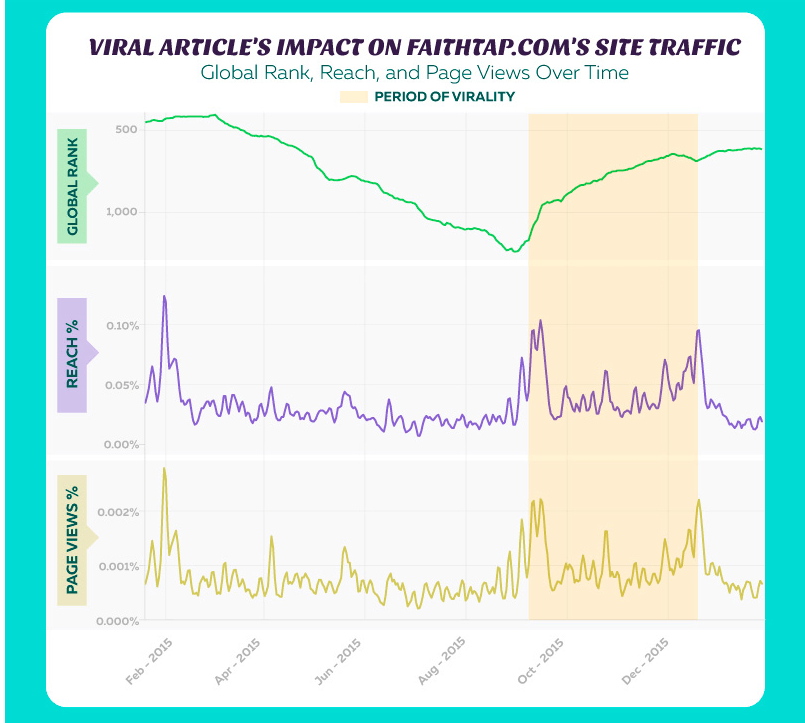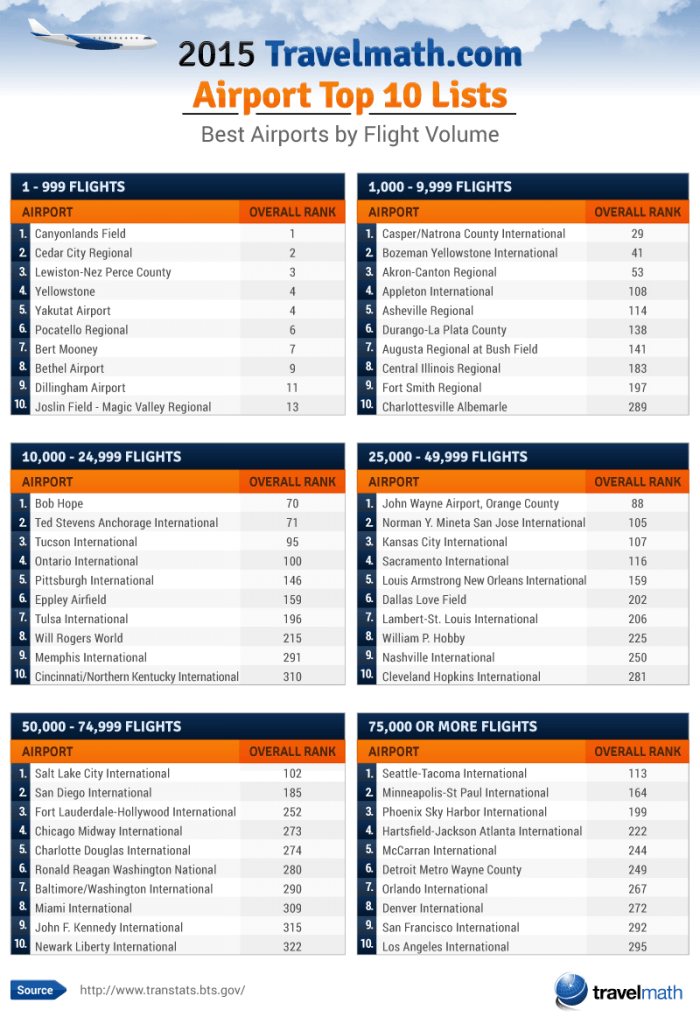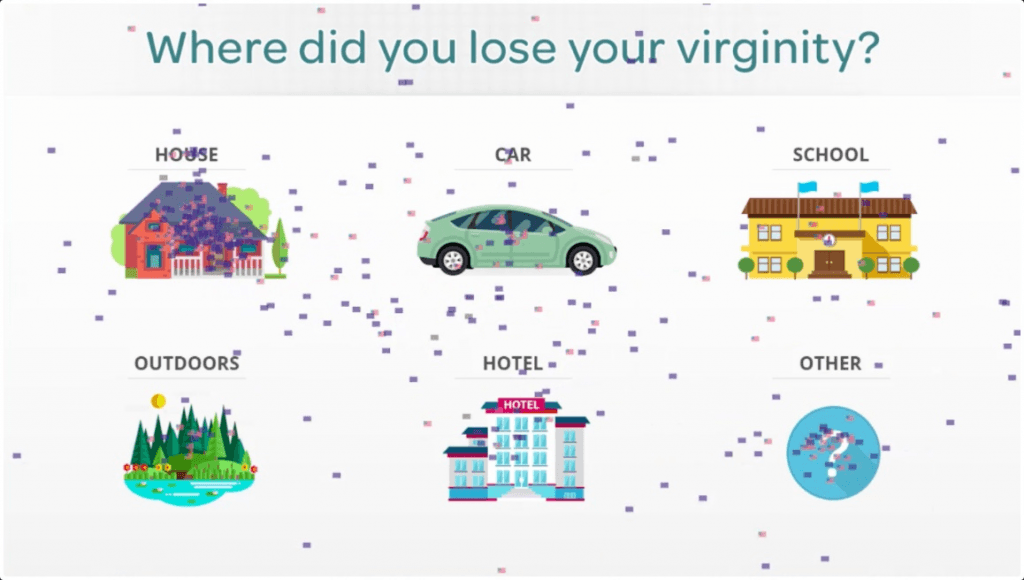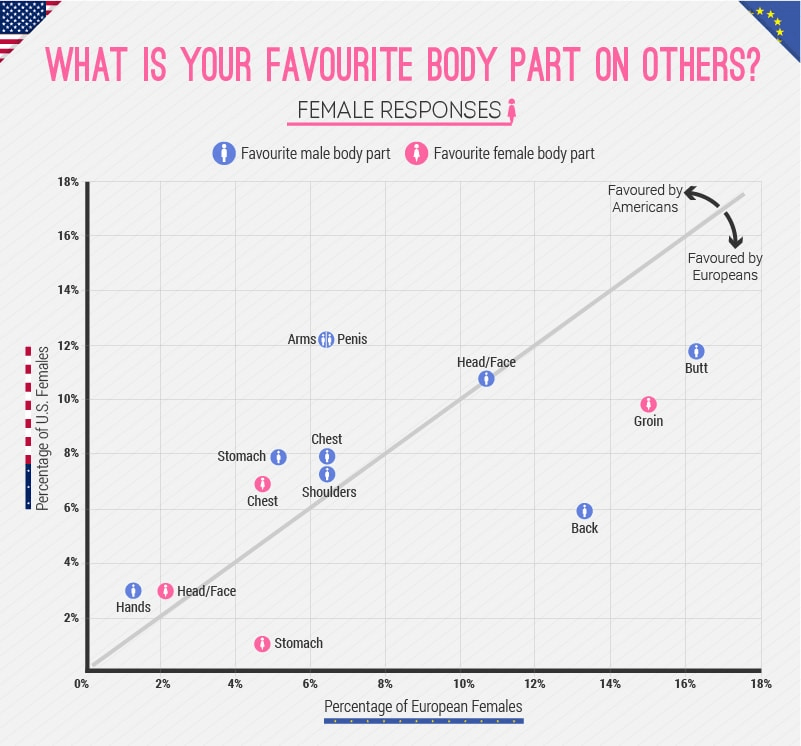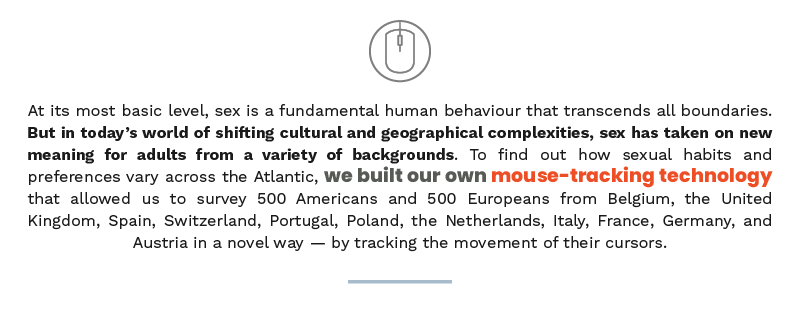It’s challenging to vie for a customer’s business if they don’t know who you are. Of course, alerting them to your presence isn’t as easy as riding a bike downhill.
When you’re searching for how to increase brand awareness, you’ll likely see that advertising is an option – but it’s not always the best one if budget and ROI are a concern.
A better strategy for appealing to the masses and your target audience is to use high-quality content to raise the visibility of your brand. By its nature, content marketing boosts brand awareness (i.e., getting lots of people to see your brand). However, there are specific strategies to use when brand awareness is your No. 1 goal.
Keep reading for what these strategies are, the fundamental ways they are used, and how you can implement your strategy technique to build brand awareness.
Broadly Appealing Brand Awareness Strategy
When you want your content to reach as many people as possible, your brand awareness strategy should be geared toward mainstream topics that appeal to high-authority news sites with large followings.
We’ll use one of our most successful campaigns, Most Instagrammed Locations, as an example to illustrate the five steps of a basic general brand awareness strategy.
Step 1: Choose an idea that has broad appeal.
This is a crucial component for upping your content’s chances at earning national coverage. If your company offers a good or service to the general public, this is an easy feat. But if you sell something that isn’t universal, your content idea should extend further from your offerings.
This is called tangential content.
We use this approach often when we’re asked how to drive awareness on a mass scale. Our Instagram study for Busbud is the perfect example. Busbud is an online bus travel service, but it wouldn’t appeal to the general population if their content stuck to buses only. We zoomed out and focused on places throughout the United States and Canada that people took Instagram snaps of the most.
We chose Instagram because of its immense popularity (more than 600 million monthly users), and even if audiences didn’t use it themselves, they’d likely heard of it.
While the idea doesn’t center specifically on bus travel, it is related to the general travel vertical. When new audiences were exposed to the content, they were made aware of Busbud as an option for their following travel plans.
Why not come up with an exciting idea about bus travel instead? Because when you’re shooting for mass exposure, you want your content to appeal to as many publishers as possible. You indeed wouldn’t find as many top-tier sites seeking stories about buses as you would travel.
Step 2: Do comprehensive research and use credible sources.
To make your content newsworthy, the foundation needs to be rock solid. Otherwise, publishers won’t trust your content or want to feature it.
If you’re creating a project that pulls from existing research, only high-quality, recent sources should be used. (Our post on educational content discusses this in-depth.)
But to really get your brand attention, original research is the best way to go. When you have something to offer the media that nobody else can, your content does two things:
- It can become highly desirable to some of the biggest publishers because it’s a brand new story – no angle pivot or outside research needed, making the work easier on the writers.
- It acts as a resource for future related stories, which leads to writers linking back to it continuously over time.
For Most Instagrammed Places, we started our research with TripAdvisor, locating the top-rated locales in North America. Then we took to social media platform, Instagram, using its API, and tracked down the most common hashtags used for those locations. The results were:
From there, we crunched the numbers and came up with a variety of charts and maps to show the type of locations (e.g., national park, beach, and theater) and specific locations (like Disneyland) that were posted the most on Instagram.
The campaign didn’t show the tens of thousands of hashtags and locations, but it was important to do an in-depth analysis in order to gather accurate results. There’s no doubt the extra effort gave weight to the project and appealed to journalists’ desire for comprehensive and authoritative reports.
Pro Tip
How do you improve your search engine rankings? A lot of marketers will tell you, “Create quality content.” But what does “quality” actually mean? Like brand awareness, this phrase is tough to define in large part because of a hard-to-swallow truth: No one can truly predict what people want to see online.
However, if you produce enough content, you can uncover the unicorns that drove an insane amount of traffic and conversions. This is “quality” content, and something you’ll want to replicate and reboot during future iterations.
For example, at Fractl we took a closer look at more than 700 campaigns we produced for our clients to identify characteristics of top-performing content. Some key findings:
- Exactly 70 percent of high-performing campaigns had an emotional hook
- More than 75 percent of high-performing campaigns shared an idea that was surprising
- Campaigns with broad appeal averaged 125 links
Beyond these three characteristics, two other traits of high-quality content are strong credibility and originality. Audiences are more likely to stay on a piece of content that provides new information they haven’t seen elsewhere.
Step 3: Keep the look simple and ensure it’s easy to understand.
Sometimes, we want to get fancy and create elaborate designs. Graphic artists want to showcase their skills and design really beautiful stuff. But it’s important to remember that you’re putting together graphics that need to appeal to the general public – not the curators at MoMA.
This is a lesson that’s quickly forgotten when you’re pouring all your energy into a piece of content you want to stand out from all the noise of the internet. Our advice is simple: Silence your inner artist and don’t get artsy-fartsy when creating general brand awareness content.
Instead, go for clean designs that aren’t distracting and let the data/results/information speak for itself. In the chart below, we could’ve included photos or renderings of the top Canadian locations, but they would’ve taken attention away from the basic information – and they simply weren’t needed.
The copy in your designed graphics and what surrounds them on your web page should be straightforward.
PRO TIP: When reviewing your copy, ask yourself if every person in your extended family (barring small children) could easily understand what you wrote. If they can’t, get to revising and simplifying.
Step 4: Make it easy to access.
Your goal with general brand awareness content is to have it spread around, and if it’s hard or impossible for media outlets to feature it, then you’ve defeated the point. Plus, it’s not difficult to make it accessible.
You can either make a blog post for the content or a landing page (i.e., a separate webpage on your site where the whole project lives). You’re essentially creating a story that flows from beginning to end – here’s a sample layout:
The embed codes are crucial for interactive components (e.g., sliding images and zoomable maps) because publishers can’t use them otherwise. Since your primary goal is to boost brand awareness – and not build links – allowing other sites to quickly grab and host your graphics without needing to reach out to you is crucial. Trust us. The easier you make it for the media to use your content, the greater your chances of having it covered.
You also up the likelihood of coverage if you offer the same content packaged in different ways. Doing this expands your content’s reach with publishers who can pick and choose the format that works best for their site and audience.
With our Most Instagrammed Locations campaign, we created an interactive map of the United States and Canada. Viewers could click it to get an up-close look at specific states, provinces, or territories. It’s intuitive, and the clear yet concise instructions at the top gave a little extra help for those who needed it. Here’s a snapshot of it:
But not all publishers’ sites have the technical capabilities to host interactive graphics, so we also made two charts with the same information – one for the U.S. and Canada.
PRO TIP: When strategizing how to increase brand awareness, don’t forget about making shareable graphics and text for your social media accounts. It can help create a calendar of when you plan to launch posts on Facebook, Twitter, Instagram, etc.
Step 5: Promote the heck out of it.
Making high-quality content that is optimized for all the keywords you want might help you with SEO, but it’s not going to do much for broad brand awareness. Content sitting on your site unpromoted is like putting a new cereal brand on the shelves without advertising it. Sure, people may stumble across it, but you’re missing a huge potential audience.
Promoting content isn’t rocket science, but there are many tricks to the trade that can seriously elevate your outreach efforts. Fortunately, our Tell-All Guide to Digital PR offers insights we gathered from over 1,300 publishers. It also includes tips like:
- Target writers who specifically cover the topic your content focuses on.
- Look at publishers’ engagement levels when deciding who to pitch your exclusive to.
- Don’t send outreach emails on holidays (or the day before and after).
- Keep your subject lines to 10 words or fewer.
- Don’t be too self-promotional.
Successful outreach takes time and dedication. Don’t put it on the backburner and waste the great work you’ve done making your content. After you’ve built relationships with writers and editors, you can conduct digital PR outreach more efficiently in the future.
When our digital PR department began promoting the Most Instagrammed Locations campaign, it quickly garnered interest from TIME, Yahoo, Business Insider, and over 300 other publications. Our metrics were impressive. It was also shared close to 37,000 times on social. But what increased brand awareness for Busbud was the television coverage. Let’s go into that next.
Pro Tip
Unfortunately, PR professionals have a history of being denounced by publishers as spin doctors in large part due to poor outreach practices like mass pitching a long list of publishers. If you’re not taking the time to find the right person at the right publication, there is a high probability that your pitch will be seen as irrelevant.
So what are some ways to ensure you’re not alienating writers? At Fractl, we surveyed 1,300 publishers and discovered what makes the perfect pitch. Some insights you’ll want to share with your PR team:
- An eye-catching subject line is key: More than 60 percent of publishers agree that an email’s subject line is the most important factor for whether they open an email
- Not a match: Exactly 80 percent of publishers say a pitch irrelevant to their beat is a common reason for declining a pitch
- Too promotional: More than 50 percent of publishers said they would decline a pitch that seemed to self promotional
Even the best content will fail to get any coverage if you don’t have a strong digital PR strategy. This means absolutely no mass pitching your campaign to a long list of publishers. Not only do you need to choose the right targets for outreach (a.k.a. publishers that actually publish stories about your campaign topic), you need to choose the right person at that publication (a.k.a. the person who regularly writes about the topic). That way, you’re not alienating writers with irrelevant pitches. You also need to send compelling, personalized outreach pitches to each target (don’t worry, we have a checklist for that). By sending solid pitches, they’re more likely to open your emails in the future.
Increase Visibility With Local Angles
Newscasters from across the United States and Canada shared Busbud’s Instagram story with their viewers. (Check out the video compilation here.) What about it piqued the interest of so many news stations? The local angle.
The campaign had something to say about every state, province, and territory, so North America’s reach was unlimited. When geo-bait is used in content, it casts a net that captures everyone in the locations represented. (Geo-bait means a geographic focus that makes readers want to see how their location is represented.)
We’ve seen a significant boost in brand awareness for our clients who choose campaigns based on geographical areas (i.e., maps).
For example, we created Bar-Hopping: The Ultimate Bar Road Trip, which featured 196 of the oldest bars in America. Publishers from coast to coast were able to find their area’s historic bars and share them with their readers in their coverage.
This campaign for Trippy included an interactive map (see below) and graphics that ranked the states with the most bars, called out the bars with the latest “last calls,” and named the bars with five-star reviews on TripAdvisor.
This campaign’s diverse components gave local publishers several reasons to feature the project, which is an excellent tactic to use when creating your own geo-bait content.
Unexpected Benefits of Broad Brand Awareness
After discovering how to increase brand awareness with content, you might come across some upsides you didn’t anticipate. For instance, the good press we earned for Busbud made them look good among potential employees.
Our associate director of marketing at the time, Kerry Jones, added:
Now that we’ve covered how to increase brand exposure for general audiences, let’s look at gaining visibility in your niche.
Targeted Brand Awareness Strategy
If your product or service is intended for a select group of people only, like your potential customers, make sure a targeted brand awareness approach is part of your overall marketing strategy.
For instance, a company that manufactures farming equipment should focus on marketing to farmers and those in the agriculture industry – the only people who would purchase its product.
We’ve helped many clients boost their brand recognition with an awareness strategy directed at their target audience. The steps outlined in the section above apply here, except you won’t choose an idea with broad appeal. Instead, you’ll hone in on your niche’s community.
You must fully understand your brand’s space to see where the needs are and the topics that industry publications would be interested in. This means researching the online community your audience is a part of and using that insight to guide your ideation (i.e., the process in which you come up with ideas).
Here is how we used this strategy for clients in various industries:
Increasing Brand Awareness in the Marketing Niche
Alexa came to us seeking more exposure for its SEO tools in the B2B marketing niche. First, we researched the online publications that marketers frequent, including:
- Marketing Land
- Adweek
- Marketing Insider Group
- Hubspot
- Inc.
During this initial phase, we immersed ourselves in the articles that performed best – reading the comments and paying attention to the number of social shares or other engagement signals (e.g., page views). We knew from the beginning the most significant piece of the puzzle would be positioning Alexa as a thought leader in the marketing sphere; the research we conducted helped us choose what topics there was an opportunity to demonstrate value with.
Marketing Brand Awareness Campaign Example
We wanted to showcase what Alexa’s competitive intelligence tools could accomplish so that readers would look at them as an authority on the topic. We used those tools to examine four pieces of viral content for the campaign Measuring the Effects of Virality, which showed the global rank, reach, and page views for each.
While marketers would have found the above chart interesting, we had to take it one step further to truly resonate with that audience. While researching the marketing niche, we learned these readers wanted content that’s actionable. So we added the following component to each case study within the campaign:
Our homework paid off: Both Inc. and HubSpot offered our client guest post slots, which is an excellent way for marketing gurus to demonstrate their authority. The campaign was featured on 150 other sites as well.
Increasing Brand Awareness in the Travel Niche
The travel industry has a big audience and many top-tier publishers, so getting your travel-related content covered should be easy, right? Think again. The larger an online community is, the more competition there is.
Eager for the challenge, we began our research into travel publications and blogs, including:
- Condé Nast Traveler
- Lonely Planet
- Yahoo! Traveler
- Travel + Leisure
- Travel Daily News
We learned that travel enthusiasts enjoyed content that showcased travel destinations and topics related to transportation, travel tips, and surprising facts. Armed with this background information, our ideation sessions revolved around these subject matters.
Travel Brand Awareness Campaign Example
As mentioned in the case study on our engagement with Travelmath, we knew it was essential to position the client as an authority in the travel niche. One way to do this is by coming up with a formula for a ranking system. We settled on doing this for U.S. airports.
In addition to the overall top lists – which were created with stats on flight delays, lost baggage incidents, and fair prices – we made graphics showing the airports with the longest and shortest U.S. Customs and Border Protection wait times and the airports with the most TSA claims. We also created an interactive content feature that allowed viewers to sort through the airport rankings by the criteria of their choosing.
This comprehensive campaign was robust enough to catch the eye of over 300 publishers, including Yahoo! Travel. It was also shared nearly 14,000 times on various social networks.
Increasing Brand Awareness in the Sexual Health Niche
A U.K. client that came to us wanting to increase their authority, DrEd is an online medical provider that offers confidential men’s, women’s, and sexual health services. To understand the target audience that DrEd wanted to be exposed to, we delved into both the sex/relationships and health niches and gathered insights for what publishers and readers like the most. These included:
- The Independent’s Love & Sex
- CafeMom
- Maxim
- BroBible
- People
- Glamour
While we came across plenty of lighthearted and fun pieces of content that performed well, we needed to tie in trustworthiness to the campaigns to have DrEd recognized for its integrity and clout.
Sexual Health & Relationships Brand Awareness Campaign Example
For American vs. European Sexual Preferences, we thought outside the box and crafted a survey that used mouse-tracking technology to obtain the results from 1,000 people. One of the components of the campaign was a video that showed the respondents’ selections to the various questions. Here’s a screenshot:
Brands can say they conducted a survey, but this was proof of ours. This type of method helps build trust in your brand among publications and readers.
In an added effort to increase brand awareness, we created additional graphics tied into the video and were more shareable. Not counting the footage and screenshots, nine extra graphics gave publishers more content to choose from in their coverage. Here’s one of them:
The brand awareness strategy paid off, with top-tier sites such as Maxim and The Independent featuring the campaign.
It’s important to note that the language we used in the landing page copy was straight-forward and professional. See an excerpt below:
Using this tone in the text, we showed that DrEd was respectful of all consumers’ opinions and sexual preferences and habits. This content helped advocate the brand as trustworthy and a place readers could turn to for health issues or concerns.
Now, we’ll cover one more client who sought brand awareness in their industry niche: sports.
Increasing Brand Awareness in the Sports Niche
Tasked with creating shareable content for its blog and raising brand awareness, our in-office sports enthusiasts were pumped to tackle our engagement with Fanatics – a market leader for licensed sports merchandise and gear.
We strategized different types of content: a mix of evergreen content and timely, newsworthy campaigns that revolved around major sporting events to achieve those goals. Some of the audiences we wanted Fanatics to tap into include:
- USA Today Sports
- MSN Sports
- The Score
- Sports Illustrated
- ESPN
Given our team members working on the account were already a part of the sports community, we kept in mind that the brand was “all about the fans” – and our research and ideation honed in on that.
Sports Brand Awareness Campaign Example
For the full-scale NBA Playoffs on Twitter campaign, we tracked the number of tweets that mentioned teams and select players and tweets that came from the teams themselves. From there, we calculated fan engagement and presented a live ranking of the NBA playoffs on Twitter.
Because we covered all of the teams and top players in the playoffs, publishers focused on who was outperforming the others. As an example, USA Today’s coverage of the campaign featured this headline:
Our case study on Fanatics discusses some of the evergreen blog content and other content marketing campaigns we created for the brand. All in all, six months of work resulted in a 1,100% increase in organic traffic for the site.
Unexpected Benefits of Relevant Brand Awareness
What type of results could you expect from a target brand awareness approach?
Fractl’s Kerry Jones offered insights on how it affects lead generation: “As a B2B brand, the apparent benefit we’ve seen at Fractl from increased brand awareness is a significant uptick in our inbound lead volume.
“But it hasn’t only been the volume of leads that has increased for us due to more brand recognition,” she continued. “Lead quality has improved, while the time it takes to close a lead has decreased.”
Now You Know How to Increase Brand Awareness
While many marketers use content for SEO and link-building purposes, boosting brand awareness is also a direct result of these content marketing tactics. Depending on your specific goals, though, the digital marketing strategies we explained above are more likely to boost your brand’s exposure to either a mass audience or a more targeted niche, eventually earning more customers.




